
Picking the Perfect Plan: 3 Ways to Explore Sake in Nada-Gogo, Kobe
- Written by: WESTPLAN
Meet Kiko Matsuda, a writer passionate about travel, sake, and good food, with many years spent living in the Hanshin area between Kobe and Osaka in pursuit of Japan’s finest sake.
Beginning with Nada in Hyogo Prefecture and Fushimi in Kyoto, two of the Kansai region’s leading sake producers, her work has taken her to breweries across the country, where she has documented the local features and shared stories of the craftspeople.
Today, she takes Live Japan editor Johanna, who had only recently discovered the delights of sake, through the local Nada-Gogo area.
This page contains promotional content.
- Table of Contents
-
- Discovering Sake in Kobe’s Nada-Gogo
- Plan 1: A Classic Tour of Popular Breweries in Mikage-go
- Plan 2: Exquisite Pairings at Brewery-Owned Restaurants with the Sake + Gourmet Experience
- Plan 3: A 400-Year Journey into the Heart of Sake Culture in Nishinomiya-go
- The Perfect Plan for You: Recommendations by Travel Needs
- Make the Most of Your Nada-Gogo Trip: Recommended Passes & Tours
Discovering Sake in Kobe’s Nada-Gogo
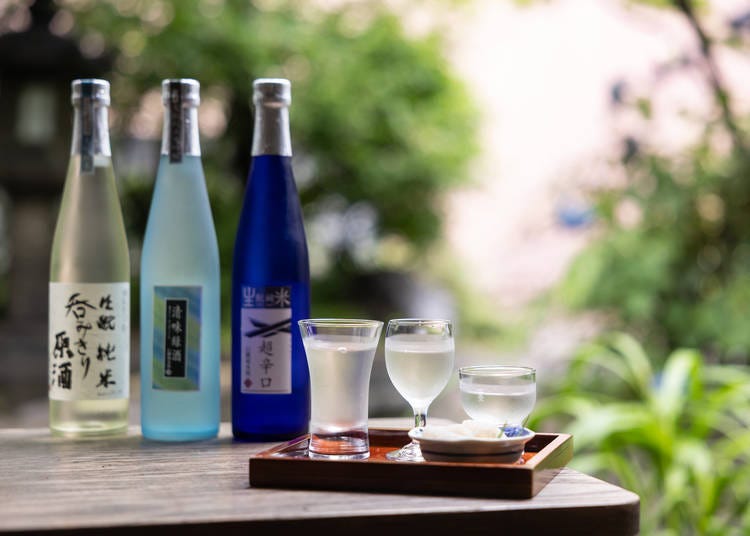
All About the Nada-Gogo Area
Stretching about 12km along the coast from Kobe’s Nada Ward to Nishinomiya City in Hyogo Prefecture, this region is home to numerous sake breweries. It’s divided into five brewing districts, collectively known as Nada-Gogo. From west to east, those districts are: Nishigo, Mikagego, Uozakigo, Nishinomiyago, and Imazugo.
Brewing first flourished here in the late 17th century. With a prime location facing Osaka Bay, the area expanded quickly by shipping large quantities to Edo (present-day Tokyo) and Osaka. Today, it still boasts the largest sake shipment volume in all of Japan.
Nada-Gogo Sake: What Makes it So Special?
Nada-Gogo sake is shaped by two natural advantages: the dry northern winds sweeping down from Mt. Rokko (known as Rokko Oroshi), and Miyamizu, the underground spring water from the Rokko mountains. This hard water contains minerals like calcium, potassium, and phosphorus, promoting active yeast fermentation and resulting in the bold, dry taste often called “men’s sake.” In contrast, Fushimi sake is brewed with moderately hard water, resulting in sake with smooth, mellow character, known as “women’s sake.”
Today, however, advances in brewing techniques mean that flavor can vary widely from one brewery to the next, dependent on factors like rice variety, yeast, and brewing method. Even within a single brewery, a broad range of flavor profiles can be produced.
Brewery Tours: A Look at Nada Gogo’s Sake-Brewing Culture
Sake is classified into types like daiginjo and ginjo, based on factors like rice polishing ratio (how much outer grain is milled away before brewing), and brewing method.
The purpose of this trip was to visit breweries where one could both learn the basics of sake, and experience Nada-Gogo’s unique brewing culture, with tours that include souvenir bottles for visitors after the tasting. Pamphlets and signs at many of these facilities are written in multiple languages, and some even have English-speaking staff. Thanks to this, even first-time international visitors can participate with ease.
Sake comes in an endless variety of flavors, and every traveler has their own preference. What kind of sake trip is best for you?
The following three suggested itineraries will help you find the perfect trip so you can dive deep into the world of Japanese sake!
Plan 1: A Classic Tour of Popular Breweries in Mikage-go

The first stop for sake-beginner Johanna was a three-brewery tour, with facilities that go in-depth into the different types of sake and how they’re made. We started in Mikage-go, and traveled to Uozaki-go on foot.
- Kobe Shushinkan
- To Hakutsuru Sake Brewery Museum (20 min)
- To Kiku-Masamune Sake Brewery Museum (10 min)
Mikage-go: Kobe Shushinkan
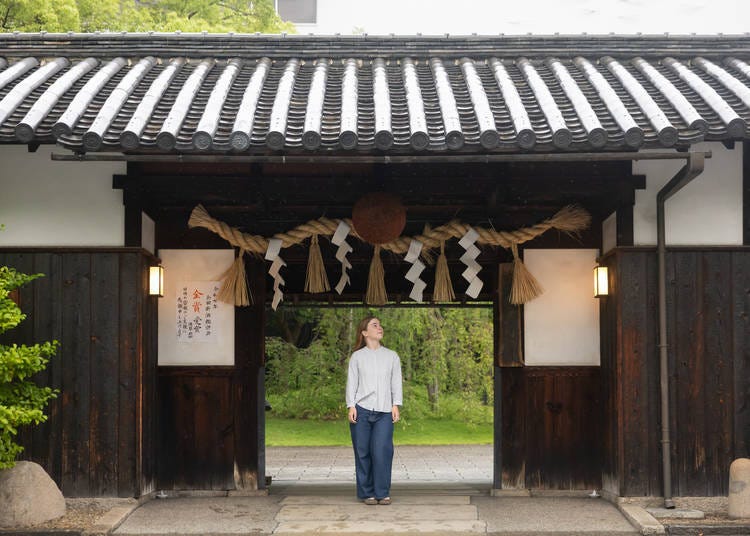
Founded in 1751, Kobe Shushinkan produces sake under the Fukuju brand. As you pass through the entrance, a traditional brewery gate called a nagaya-mon, you’ll notice that both sides of the eaves are like galleries, featuring exhibits and traditional craft sales showcasing Japanese Living.
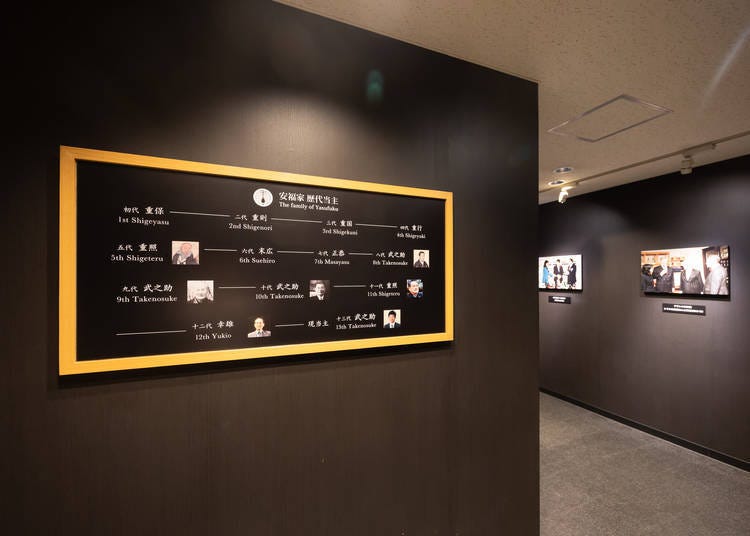
Kobe Shushinkan’s tour will take you through Fukuju-gura, the actual brewery where the production happens. After checking in at Tomyo-gura, visitors head to the first-floor theater in Fukuju-gura, where they’ll watch a video all about the brewery’s history and sake-making process (available in Japanese, English, and Chinese).
Then, you’ll take the elevator up to the fourth floor, where you’ll see videos and panels introducing sake rice and detailing the brewing process. You’ll also get a view of the production line through the glass. This part of the tour is self-guided, allowing visitors to move at their own pace.
When Johanna handled the polished rice used in brewing, she was struck by the level of care in its preparation: “Seeing how much passion goes into sake production made me feel as if every single grain carried its own meaning. It was impressive.”
- Hours:
11 AM– 4:30 PM daily (closed mid-Dec to mid-Jan)
Reservations required at least two days in advance - QR explanations available in Japanese, English, and Chinese
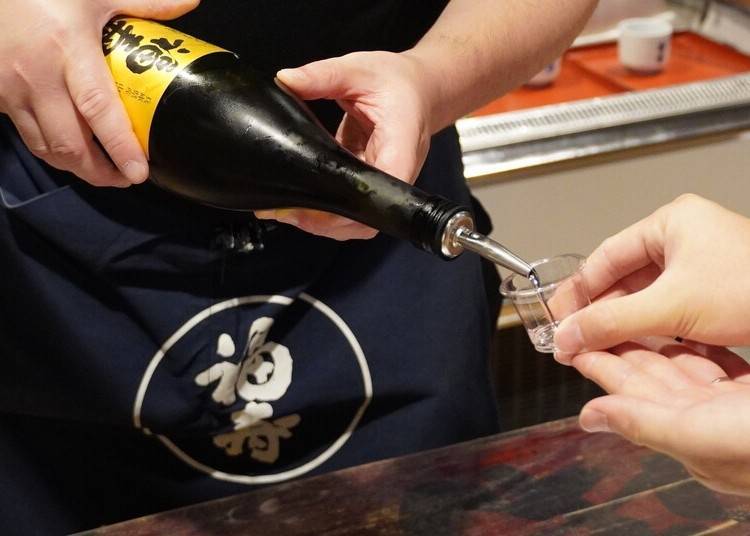
After the tour, visitors can head to the brewery shop Tomyo-gura to sample Fukuju sake for themselves. Note that available selection will vary by season.
Johanna notes: “I heard that this sake was served at the Nobel Prize banquet in Sweden, so being able to taste it here in Japan felt really special. It felt like my home country and Japan were connected through this drink. I really enjoyed it.”
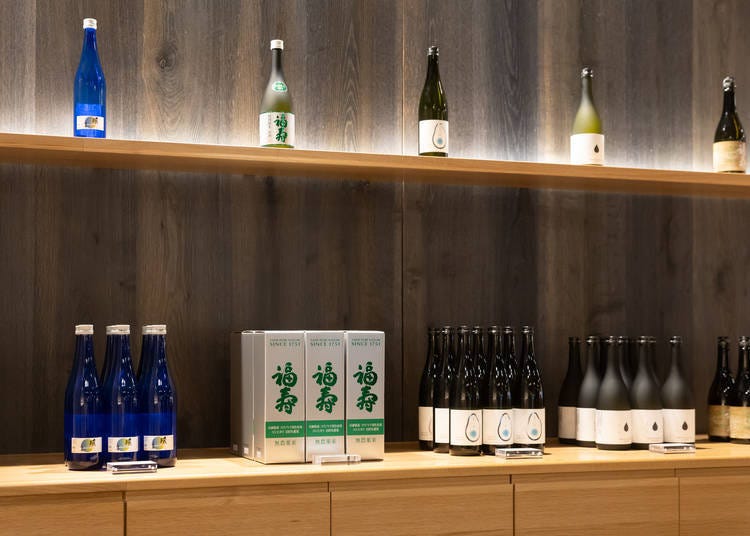
The adjoining shop also sells a wide range of Fukuju sake, including the world’s first carbon-zero sake, Fukuju Junmai EcoZero (1,382 yen / 720ml), the gold medal-winning Fukuju Chotokusen Daiginjo from the Japan Sake Awards (5,500 yen / 720ml), and Yuzu Sake blended with natural yuzu juice (1,210 yen / 500ml).
-
Kobe Shushinkan神戸酒心館
- Address 1-8-17 Mikagezuka-cho, Higashinada-ku, Kobe, Hyogo
- Phone Number 078-841-1121
Hours:
Brewery Shop Tomyo-gura:
10 AM–6:30 PM (Open year-round except New Year’s holidays)
Sakabayashi Restaurant:
Lunch: 11:30 AM –3 PM (Last order at 2:30 PM)
Drinks: 2:30 PM – 5 PM (Last order at 4:30 PM)
Dinner: 5:30 PM – 9 PM (Last order at 8 PM)
Mikagego: Hakutsuru Sake Brewery Museum
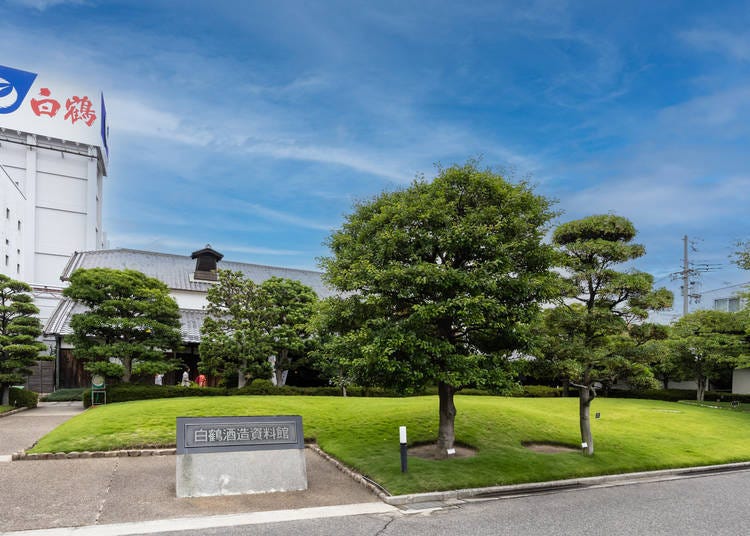
Founded in 1743, Hakutsuru Sake Brewery renovated one of its former brewing buildings (used for brewing until March 1969) into the Hakutsuru Sake Brewery Museum.
Admission is free, and visitors are free to explore the exhibits as they please. Life-sized figures depict the brewing process and the daily life of the workers (called kurabito) of the time. Each figure is modeled after an actual worker, so every one has their own unique facial features and physiques!
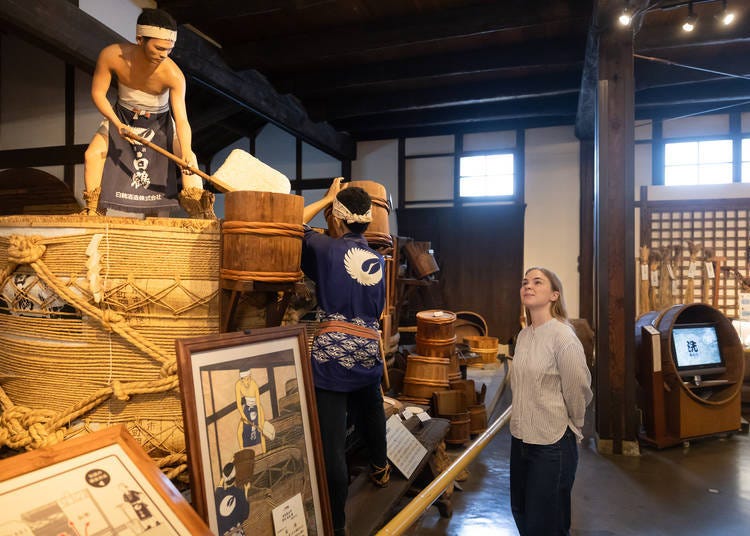
The visit begins with a video presentation in the hall near the stairs to the second floor, introducing Hakutsuru’s history and sake production. Exhibits are arranged in order of the brewing process.
Free Wi-Fi is available, so you can scan the QR codes at each display for easy-to-understand explanations on the brewing process and the work of past kurabito. Information is available in 15 languages, making it easily accessible for international visitors.
Johanna says: “The life-sized figures clearly showed every step of the brewing process, which was fascinating. It was also interesting to learn how the kurabito only worked there during brewing season, with its harsh conditions and extreme temperature changes, yet still managed to produce such high-quality sake! The audio guides were also really informative, talking about the history and craftsmanship of brewing throughout the generations. It really deepened my appreciation for sake.”
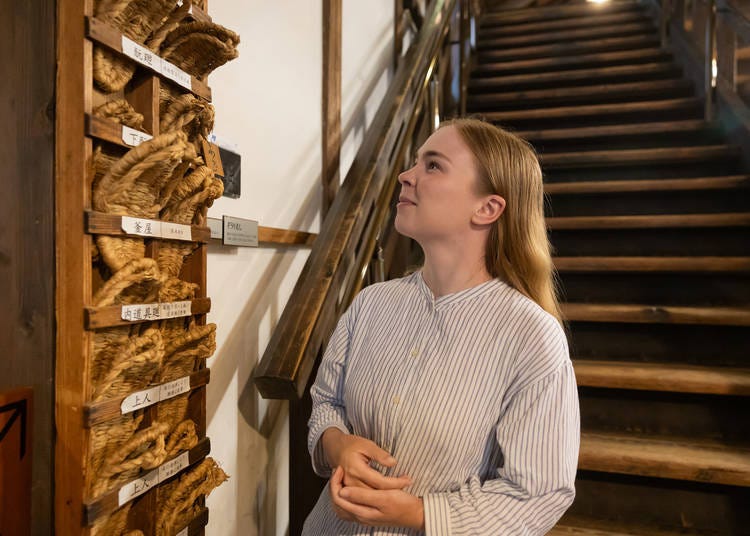
Back then, Japanese people wore sandals woven from straw called waraji. The top position on the sandal rack belonged to the master brewer, called the toji, whose sandals were sturdier and better crafted than those of the other workers. It’s a little detail that remains faithful to the past.
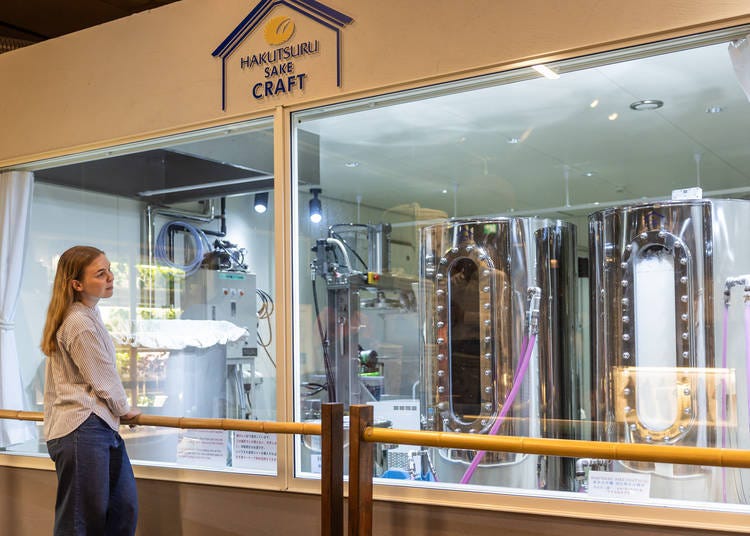
Opened in September 2024, the microbrewery Hakutsuru Sake Craft produces sake entirely on-site. They do everything here, from washing the rice to bottling, so if your timing is right, you just might may be able to catch the workers in action right through the glass window.
A new recipe is brewed every month and produces one tank (about 90 kg of rice, yielding 200–250 720 ml bottles), so no flavor is ever created twice!
Johanna says, “It was really interesting to see modern sake brewing right after learning about the intense manual labor required before machines, and the fermentation process that transforms rice into sake. While machines have eased the workload today, many of the main steps are still the same. It’s given me a new appreciation for how tradition and innovation can coexist.”
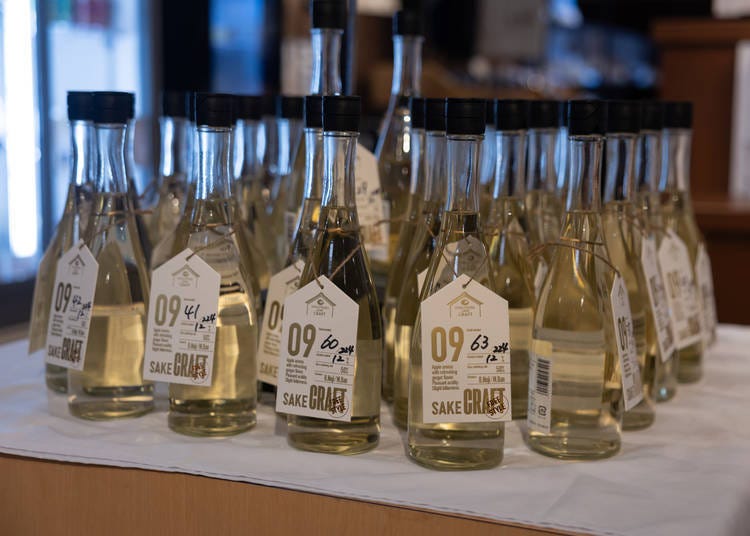
Bottles of Hakutsuru Sake Craft are numbered sequentially, starting from No. 1. At the time of our visit, they were on No. 9. And as these are only sold at the museum shop, they make great souvenirs!
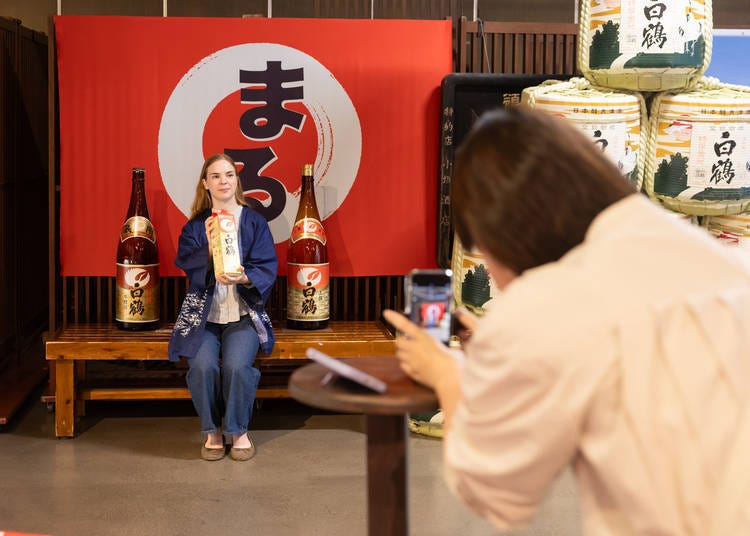
There’s a photo spot set against the backdrop of Hakutsuru’s signature Maru brand. For Johanna, wearing a Hakutsuru happi coat for the photo really made for a memorable experience. She says:
“Maru has a famous commercial where everyone strikes a certain pose. So if you ask one of the staff members, they just might show you how to pose for your photo!”
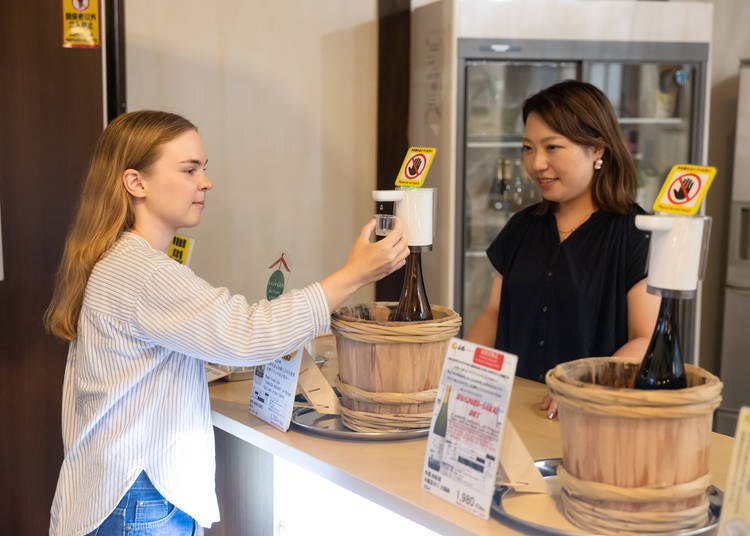
Three types of sake are available for the free tasting (with paid tastings also available). During our visit, they were Junmai Genshu, a honjozo dry sake sold only at the direct shop, and a cloudy Yuzu Sake, bursting with the flavor of the citrus fruit. Johanna’s favorite was the Yuzu Sake.
“For those less accustomed to sake, visiting different facilities and tasting lots of varieties could be overwhelming. Slipping in something fruity and easy to drink like the Yuzu Sake helps balance out the stronger flavors of traditional sake, and makes the overall experience more enjoyable. I definitely recommend trying the seasonal limited editions and flavored Japanese liqueurs, too,” Johanna suggests.
-
Hakutsuru Sake Brewery Museum白鶴酒造資料館
- Address 4-5-5 Sumiyoshi Minamimachi, Higashinada-ku, Kobe, Hyogo
- Phone Number 078-822-8907
Hours:
9:30 AM – 4:30 PM (Last entry: 4 PM)
Admission: Free
Mikagego: Kiku-Masamune Sake Brewery Museum
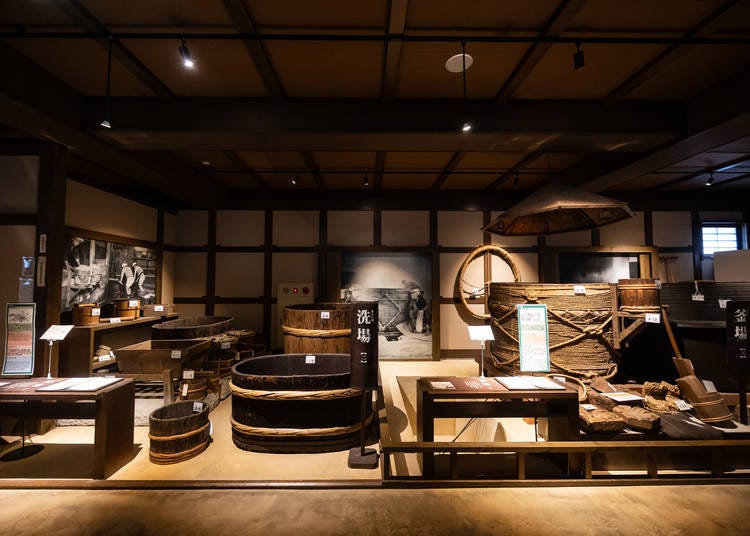
Founded in 1659, Kiku-Masamune is known for its crisp, authentic dry sake. Using the traditional Kimoto method, the fermentation process happens slowly, reducing unwanted flavors and resulting in a sake with strong depth.
The Kiku-Masamune Sake Brewery Museum has an extensive collection of tools on display that were once used in brewing. With free Wi-Fi and multilingual explanations via QR codes (in English, Chinese, Korean, Vietnamese, French, and Thai), this place makes it easy for visitors from around the world to learn about traditional brewing techniques.
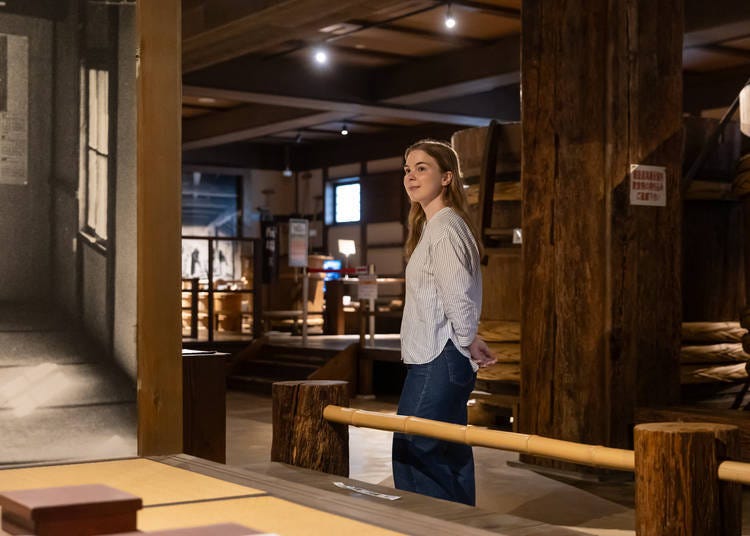
Sake brewing was traditionally done by the kurabito under the leadership of the toji. After the autumn rice harvest, the workers traveled from places like Tamba or Tajima to Nada for the winter brewing season, a tradition known as kan-zukuri (winter-only brewing).
With advances in refrigeration, year-round brewing (shiki-jozo) has become more common. Kiku-Masamune, however, combines both the traditional kanzukuri and modern year-round brewing, to ensure consistent quality while preserving traditional flavor.
Johanna comments: “After visiting a few facilities, it got easier to understand the tools and explanations, and I even noticed the subtle differences between locations. By this point, I could even point out some of the tools by name!”
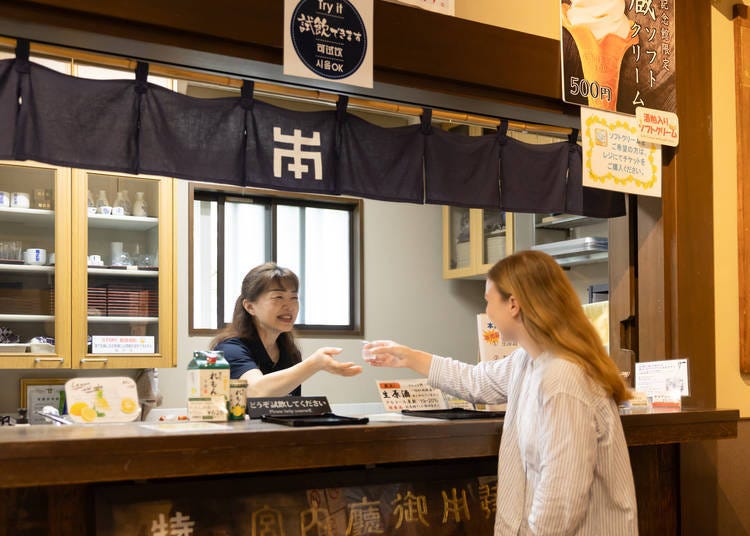
The tasting corner serves two kinds of sake, one cup of each per person, completely free of charge. At the time of our visit, the options were a non-commercial nama-genshu (unpasteurized sake) and a lemon reishu (chilled sake). The namagenshu, available only at the brewery, was freshly pressed and neither diluted nor pasteurized, resulting in its fresh flavor.

For those who wish to sample even more flavors, paid tastings are also available. For 600 yen, you’ll get a special ochoko (sake cup) and two tokens. Insert them into the dispenser, and press the button for your sake of choice. It’ll pour out the perfect amount to fill your cup!
“The ochoko was mine to keep, so it was a nice memento of the tasting,” notes Johanna.
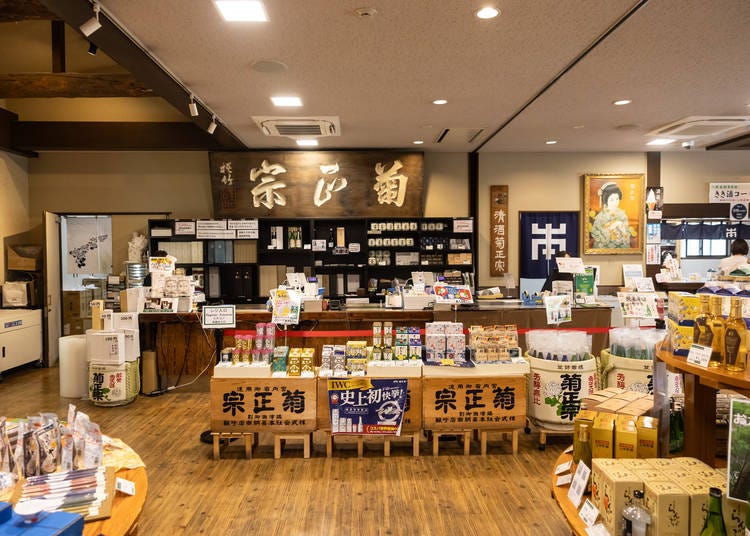
The shop carries the full range of Kiku-Masamune sake brand, but standouts include the Hyaku Moku Junmai Daiginjo Muroka Genshu (3,835 yen / 720 ml), sold exclusively in Hyogo Prefecture, and the Kiku-Masamune Josen Junmai Taruzake (1,241 yen / 720 ml), a favorite amongst fans of the brewery’s barrel-aged sake.
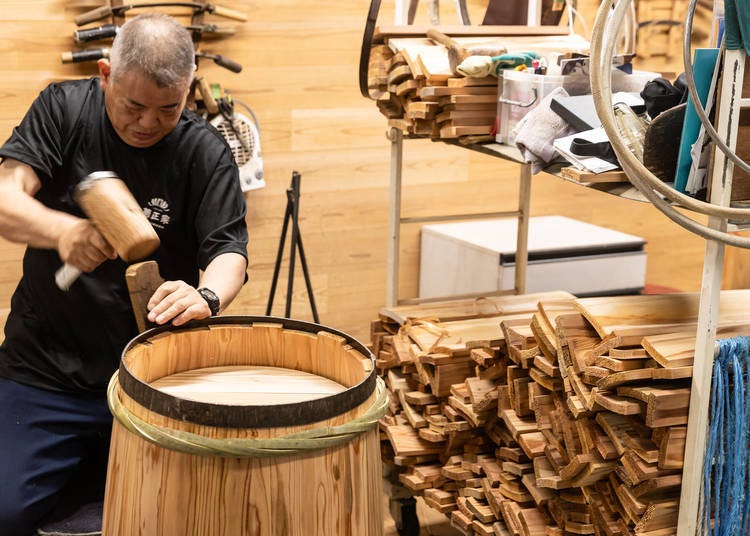
Another highlight is the reservations-required Kiku-Masamune Taruzake Meister Factory. Here, skilled craftsmen assemble sake barrels entirely by hand, using only Yoshino cedar and bamboo without nails or adhesives.
Johanna shares her impression: “I was amazed how they built these barrels that never leak a single drop, relying solely on their sight and skill. It’s incredible how such traditions and methods are still used to this day. Craftsmen with this level of skill are rare nowadays, which made the chance to watch them up close all the more special. If you happen to visit on a day when they’re at work, don’t miss out!”
Taruzake aged in these barrels has a distinct, refreshing cedar aroma with a flavor you won’t taste anywhere else. As an active production site, the processes you can see here vary by day, so if you wish to catch the craftsmanship firsthand, be sure to book in advance!
- Schedule
- Open daily (except when museum is closed)
Note: On days when barrel-making is not performed (weekends and public holidays), visitors will see a video instead
- Start Times:
- 1) 10:30 AM
2) 2 PM
3) 3 PM
(about 30 minutes per tour)
- Capacity:
- 15 people per session / Junior high school & up
- Admission:
- Free
(Advance online reservations required at least two days before visit)
https://www4.revn.jp/kikumasamune_reserve/
- Languages:
- English explanations available
-
Kiku-Masamune Sake Brewery Museum菊正宗酒造記念館
- Address 1-9-1 Uozaki Nishimachi, Higashinada-ku, Kobe, Hyogo
- Phone Number 078-854-1029
Hours:
9:30 AM – 4:30 PM (Last entry: 4 PM)
Admission: Free
Plan 2: Exquisite Pairings at Brewery-Owned Restaurants with the Sake + Gourmet Experience
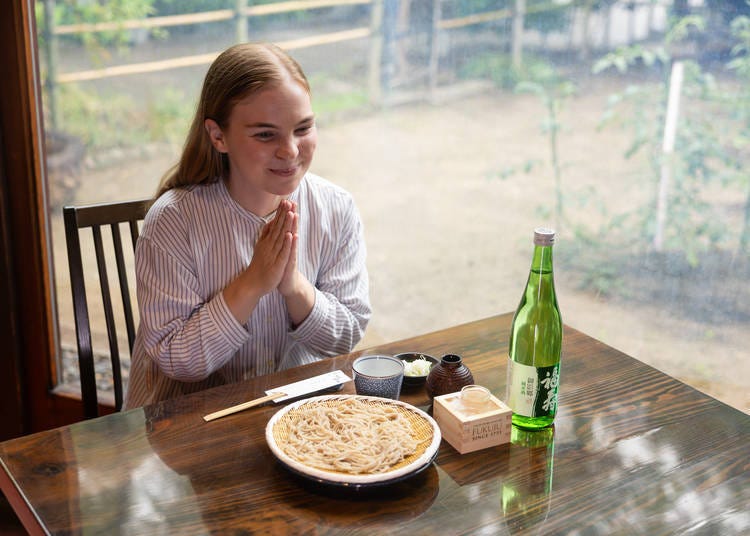
Sake has the power to really bring out a food’s flavor. Amongst the many types, shokuchushu is a type of sake designed to be enjoyed with a meal, bringing out the best in both the drink and the dish. For beginners, however, choosing the right pairing can be confusing. That’s why we recommend brewery-owned restaurants, which offer professional pairing experiences to help you choose.
Sakabayashi: Japanese Cuisine and Sake Pairings at Kobe Shushinkan
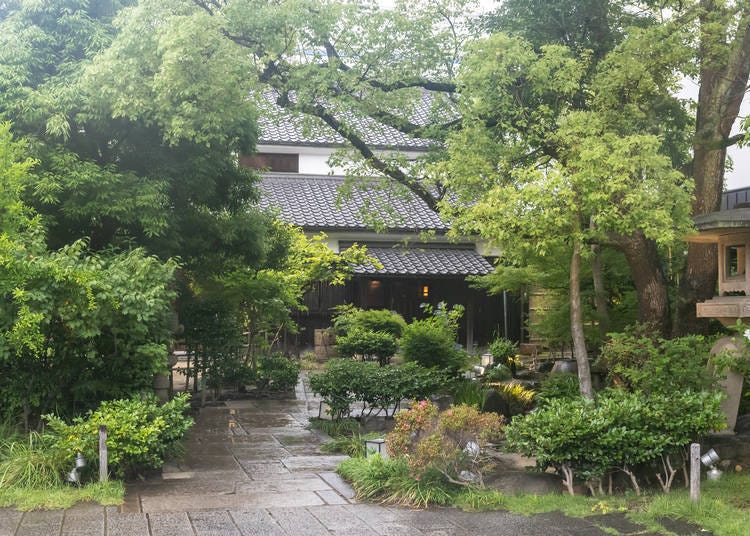
About an 11-minute walk from Hanshin Ishiyagawa Station, Sakabayashi is a Japanese restaurant inside Kobe Shushinkan. Set in the beautifully renovated former sake brewery, the front garden is designed in the image of the Mt. Rokko foothills, offering lovely seasonal views right from the window seats.
In this refined Japanese-style space, diners can enjoy freshly hand-cut soba, house-made tofu, and dishes featuring fresh seafood and Kobe beef, each perfectly paired with Fukuju sake.
Sake Soba + Fukuju Junmai Mikagego
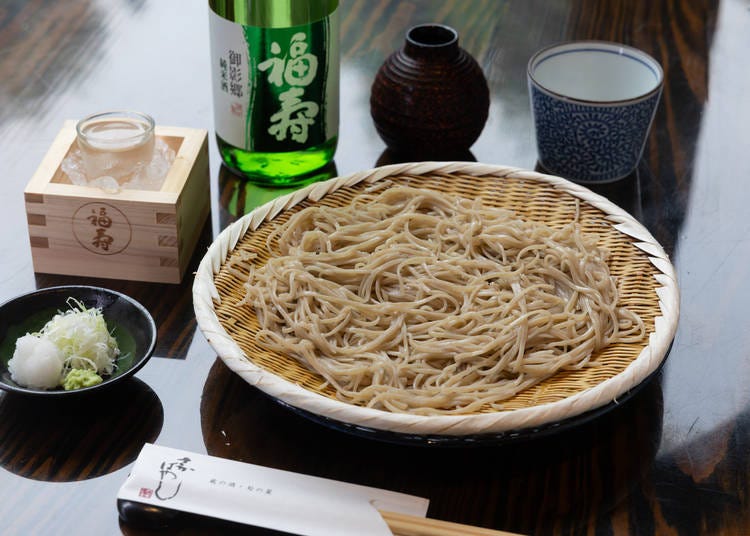
The restaurant’s thin, hand-cut soba is made fresh daily, with a smooth yet firm texture. Pour a splash of junmai sake over the chilled soba, and take your first biteas the aroma rises. Then, savor it again with the special dipping sauce for more flavor.
“I heard that in the past, people poured sake over soba that had clumped together to soften it. Makes sense!” says Johanna.
Fromage Frais Tofu with Honey + Fukuju Junmai Ginjo Yamada Nishiki Meguru
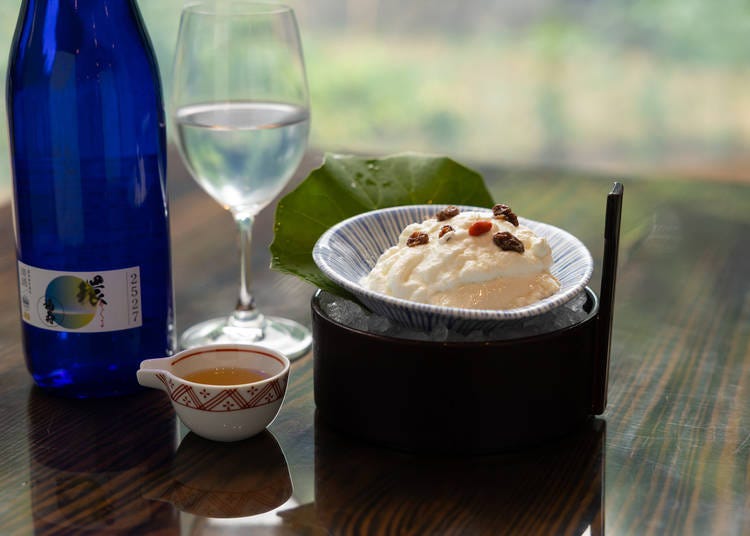
This rich, house-made tofu is scooped and topped with fromage frais from Kobe’s Yuge Farm and drizzled with honey. It pairs perfectly with a fruity junmai ginjo brewed from the sustainably grown Yamada Nishiki rice, which is cultivated using biomass waste as fertilizer.
Smoked Akashi Octopus + Ichi Kimoto Junmai
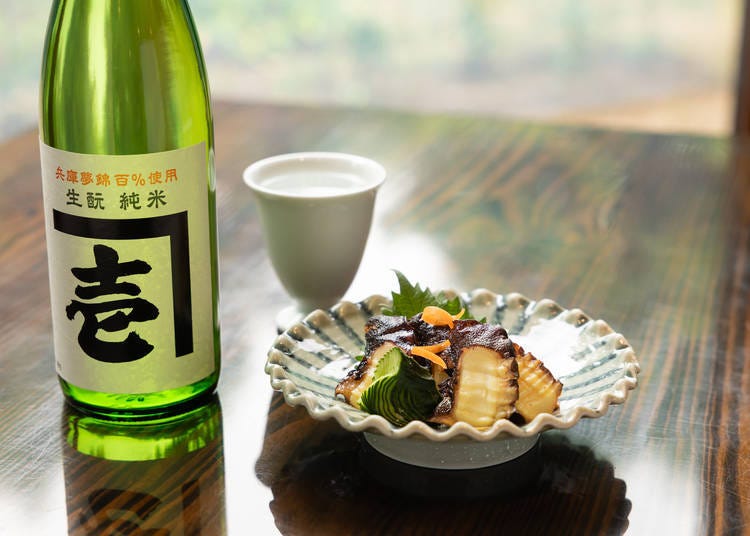
This smoked, richly flavorful Akashi octopus pairs beautifully with Ichi, a junmai sake with the full-bodied sweetness characteristic of Kimoto brewing.
“Each dish has different notes of umami, sweetness, and acidity, and part of the fun is tasting the sake while thinking about why the pairing works. Take your time. Savor the meal slowly to fully appreciate the harmony.”
The first floor has table seating and four private rooms, while the second floor, with its large beams made from reclaimed wood, is a spacious hall for groups of 19 to 44 people. Order à la carte with staff recommend sake, or reserve a full course meal in advance. English-speaking staff are available.
-
Kobe Shushinkan神戸酒心館
- Address 1-8-17 Mikagezuka-cho, Higashinada-ku, Kobe, Hyogo
- Phone Number 078-841-1121
Hours:
Brewery Shop Tomyo-gura:
10 AM – 6:30 PM
Open daily except New Year’s holiday
Restaurant Sakabayashi:
Lunch: 11:30 AM – 3 PM (Last order at 2:30 PM)
Afternoon Drinks: 2:30 PM – 5 PM (Last order at 4:30 PM)
Dinner: 5:30 PM – 9 PM (Last order at 8 PM)
*Lunch reservations required
*Menu varies by season
Brewery-Style Sake Lees Hot Pot and Kaiseki at Hakushika Classics
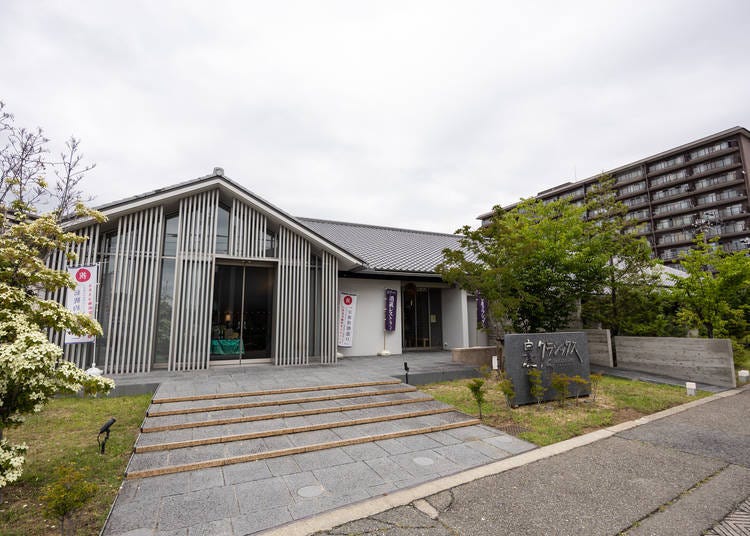
Hakushika Classics is a shop and restaurant directly operated by Tatsuuma-Honke Brewing, which has been in business for over 360 years. Just a 10-minute walk from Hanshin Nishinomiya Station, this chic, glass-fronted space offers the chance to savor Japanese sake and food culture.
The restaurant serves Kasu-jiru Nabe (a hot pot dish made with sake lees), as well as 100% buckwheat soba, tempura, and other recommended dishes. They also offer a broad selection of sake, from junmai to daiginjo, and even sake cocktails.
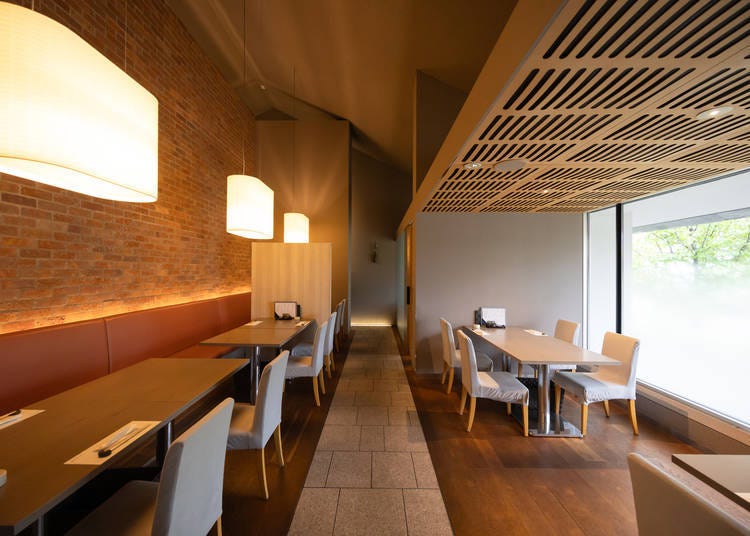
The bright interior includes spacious tables for groups, comfortable counter seating for solo diners, and private rooms for kaiseki courses.
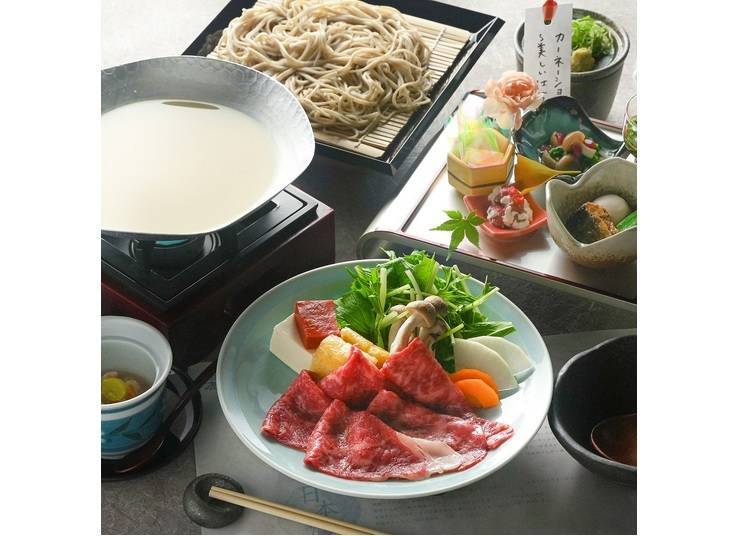
Pictured here is the Omi Beef Sake Lees Hot Pot and 100% Soba Course (5,800 yen). The meal begins with a colorful assortment of seasonal vegetables like ohitashi, shiraae, and vinegared dishes.
The main course features A4-grade inside round cuts of Omi beef, one of Japan’s three top wagyu, simmered in a special broth enriched with Hakushika sake lees. The mellow, sake-infused broth brings out the meat’s umami, while the marbling provides a rich, flavorful fat.
The chilled 100% buckwheat soba is aromatic and smooth, resulting in a deliciously memorable meal you could only experience at this brewery. It’s a combination of sake lees, seasonal vegetables, and soba that lets you savor Nada’s sake culture with all your senses.
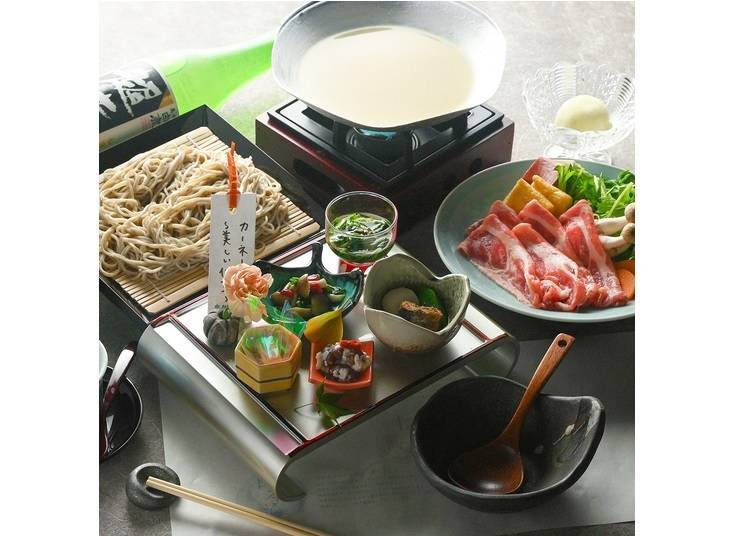
If you’re not sure which sake to pair with your meal, try the Hakushika Classics exclusive tasting set! At the time of our visit, it included Nishinomiyago Daiginjo Namachozo, Hakushika Classics Namazake, and freshly pressed genshu (dry), all for 1,180 yen.
For non-drinkers, there’s a non-alcoholic amazake available for 650 yen. Warm dattan soba tea, known for its roasted buckwheat aroma, is also served free of charge.
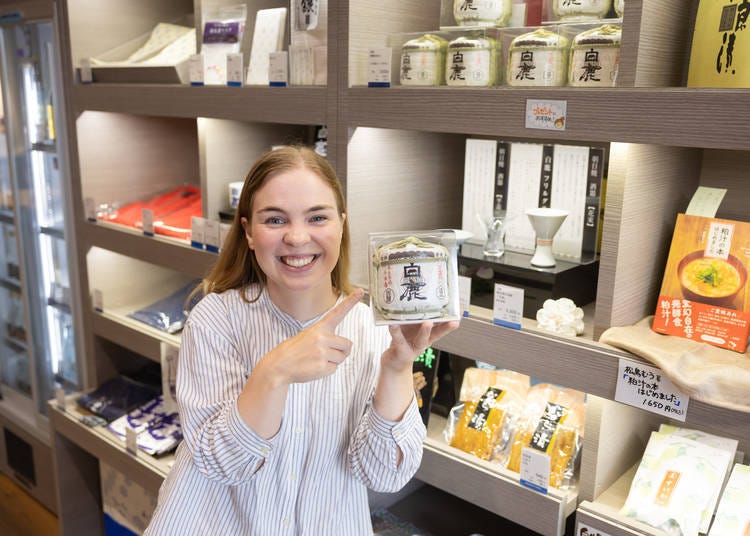
The shop offers exclusive sake and food products only available at the brewery, along with original goods. Johanna comments:
“Komodaru (sake barrels) aren’t usually found overseas, so they make great souvenirs. You may have spotted them if you’ve visited Japan. They make such cute gifts! I kind of regret not buying one myself, haha.”
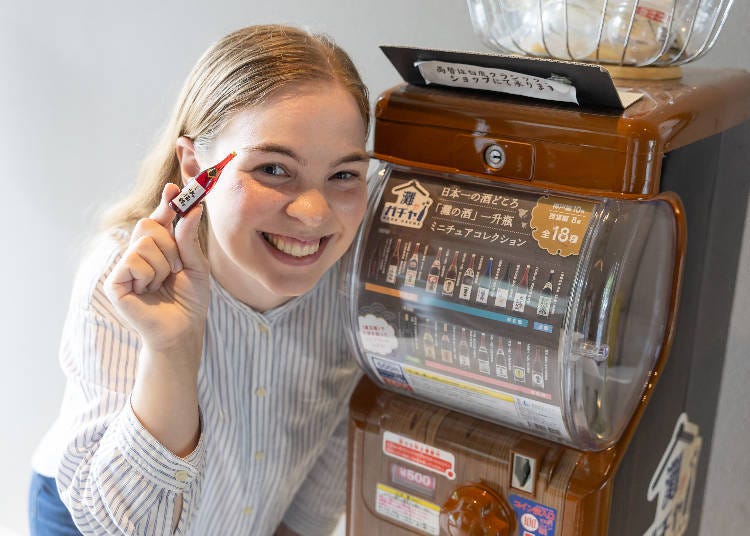
Johanna was also delighted by the Nada Gacha machine by the shop entrance. For 500 yen a try, you get a miniature sake bottle from one of Nada’s breweries. Their compact size makes them perfect as souvenirs or keepsakes from your trip.
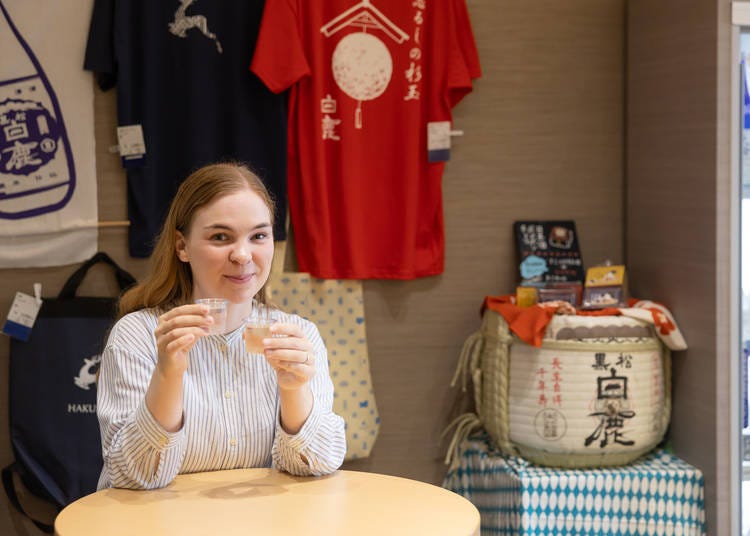
The shop’s tasting bar offers an exclusive two-sake set for 300 yen. At the time of our visit, this included Summer Junmai Namachozo and Nishinomiya-go Daiginjo. Paid tastings of other sake brands are also available for 100–400 yen each. Another highlight is the brewery-only limited sake, sold by weight.
-
Hakushika Classics白鹿クラシックス
- Address 7-7 Kurakake-cho, Nishinomiya, Hyogo Prefecture
Phone:
Shop: 0798-35-0286 / Restaurant: 0798-35-0001
Hours:
Shop:
10 AM – 6 PM / Closed Tuesdays
Restaurant:
Lunch:
Weekdays: 11 AM – 3 PM (Last order at 2:30 PM)
Weekends & Holidays: 11 AM – 3:30 PM (Last order at 2:30 PM)
Dinner:
5 PM – 10 PM (Last order at 9 PM)
Closed Mondays and Tuesdays (Open on holidays)
Plan 3: A 400-Year Journey into the Heart of Sake Culture in Nishinomiya-go
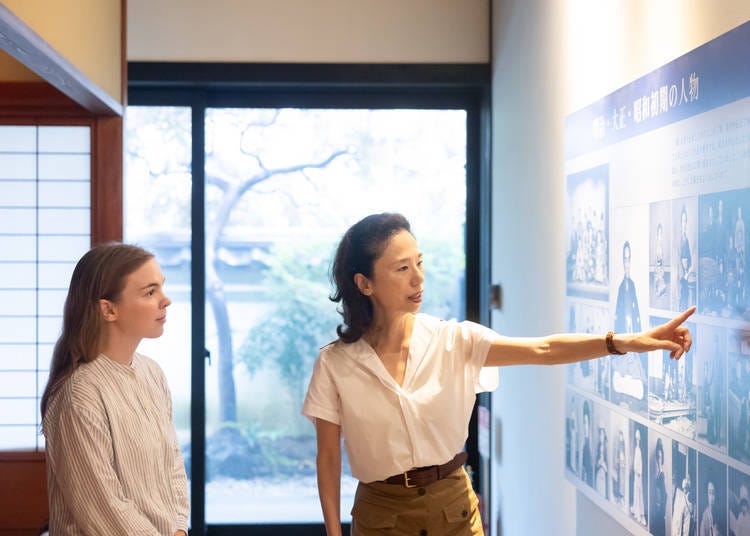
Nishinomiya-go is the source of Miyamizu, a special kind of water used for sake brewing. About a 10-minute walk south of Hanshin Nishinomiya Station lies its birthplace, surrounded by wells belonging to the breweries of Nada Gogo.
The water is delivered to each brewery by tanker truck or through dedicated pipelines. From there, a 4-minute walk south leads to Hakutaka Rokusuien, and another 5 minutes brings you to the Hakushika Memorial Sake Brewery Museum.
Experience Brewery Culture at Hakutaka Rokusuien
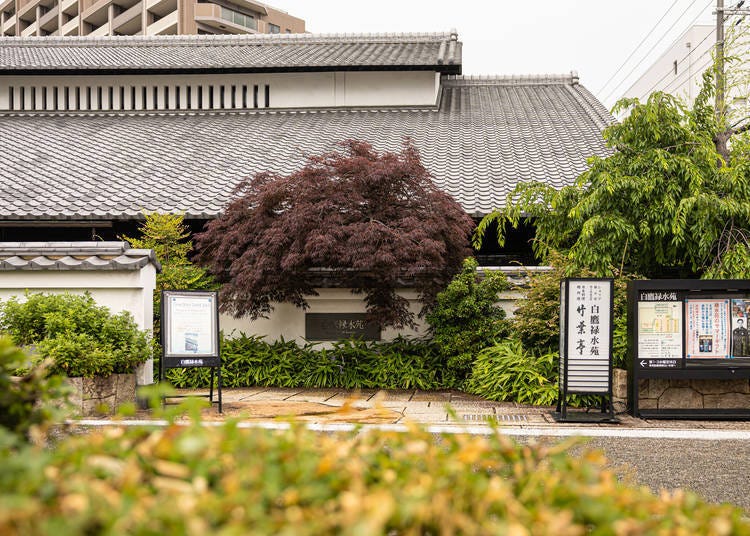
Hakutaka was founded in 1862 as a branch of Tatsuuma-Honke (Hakushika). Since then, it has stayed true to traditional methods like Kimoto brewing and kanzukuri (winter-only brewing), producing sake in small, carefully controlled batches.
In 1924, it was selected as the official sake supplier to Ise Grand Shrine, and to this day, is the only brewery in Japan that continues to make offerings there. Just south of the brewery is Hakutaka Rokusuien, a place where visitors can explore various aspects of sake culture.
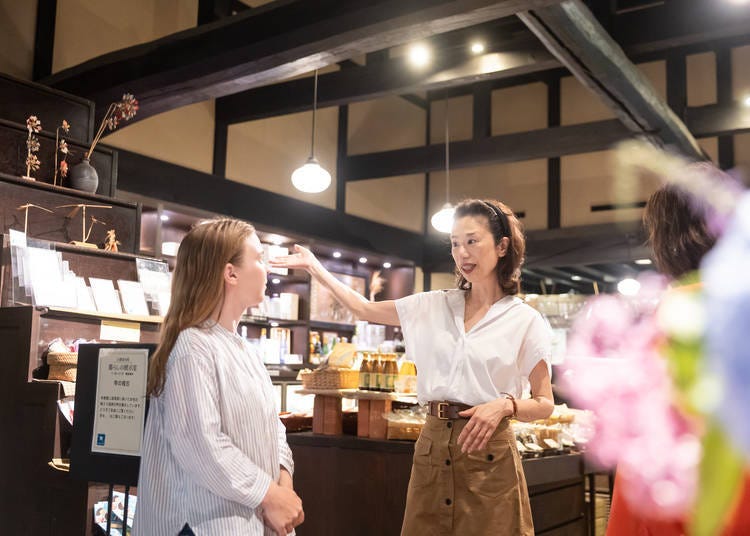
The building is a faithful recreation of a typical pre-war residence of a Nada brewery owner, directly connected to the brewery itself.
Inside you’ll find the Birokuichi shop, Kura Bar, the Hakutaka Shukokan sake brewing museum, the Miyamizu Hall event space, the Etsuan tea room, and Tokyo Chikuyotei, a Japanese restaurant specializing in eel.
Our guide was Sumiko Tatsuuma, the brewery’s fifth-generation head and general producer of Hakutaka Rokusuien.
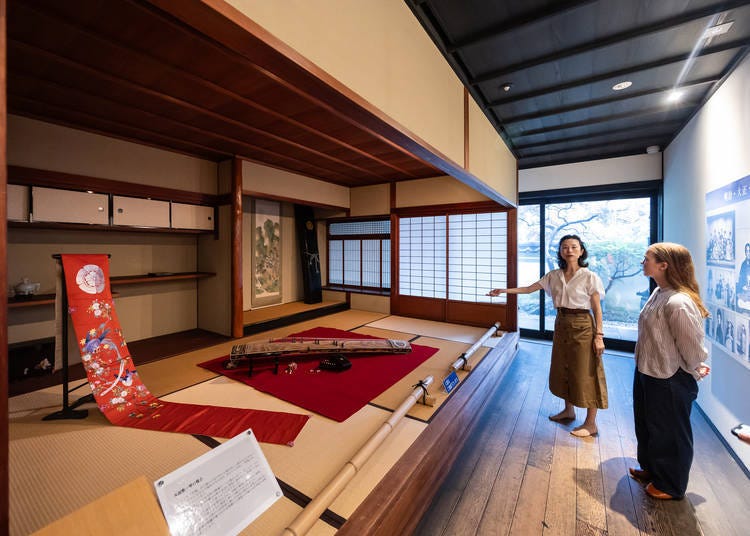
The Living Exhibit Room, based on old floor plans and records, is a reconstruction of the Tatsuuma family home that once stood here. It’s set up to depict a brewer’s residence, displaying household items passed down through four generations of the family.

“They weren’t extravagant items, but practical ones that were used and cared for over many generations. We want to share the Japanese way of valuing what we have in our lives,” explains Tatsuuma.
Johanna comments: “This was my first time seeing a living space set between the Meiji and Taisho periods. You can really get a sense of how people lived in that time.”
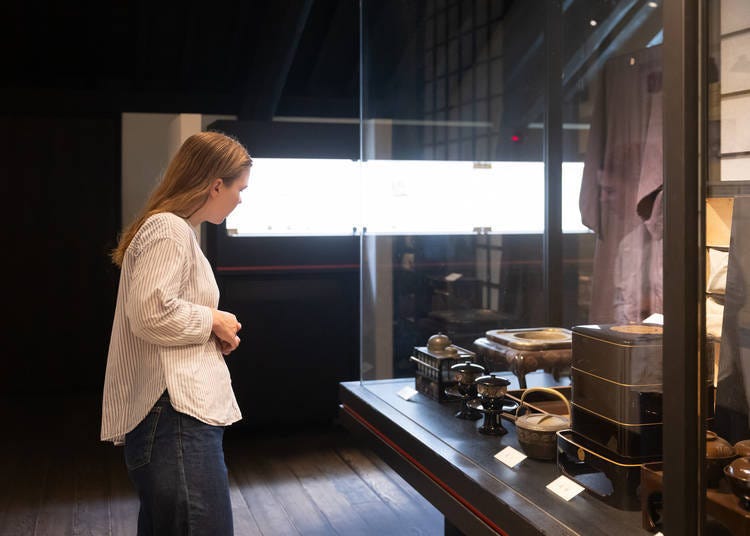
The second floor features displays of ceremonial arrangements used by sake brewers, everyday tools, and panel exhibits of portraits and photographs from the Meiji, Taisho, and Showa eras.
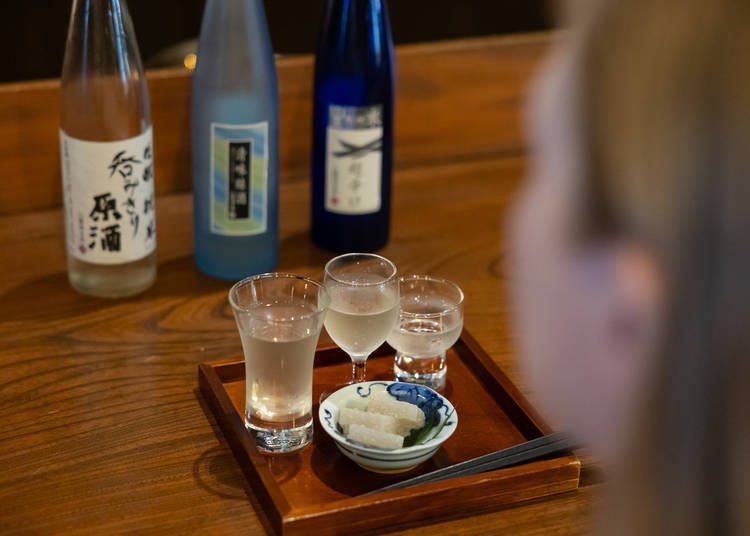
On the first floor, the Kura Bar tasting counter offers brewery-exclusive sake for 200 yen per shot. On weekend and holiday afternoons, the counter operates as a bar where visitors can enjoy Hakutaka Rokusuien limited brews and flagship Hakutaka sake at brewery prices.
- Tasting Bar (Standing)
- Weekdays: 11 AM – 6:30 PM
Weekends & Holidays: 2 PM – 6:30 PM
- Kura Bar (Counter Seating)
- Tasting Bar (Standing)
Weekdays: 11 AM – 6:30 PM
Weekends & Holidays: 2 PM – 6:30 PM
Kura Bar (Counter Seating)
12 PM – 5 PM (weekends and holidays only)
Afternoon Drink Set: 1000 yen
(Includes one cup of warm or chilled sake and three side dishes)
Seasonal Tasting Set: 1000 yen
(Includes three seasonal sakes and one side dish)
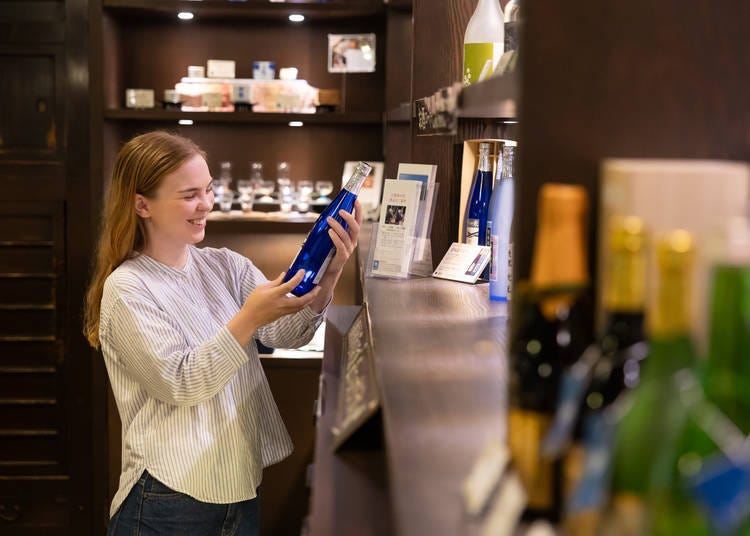
At the Birokuichi shop, you can buy seasonal sake only available here, along with specialty foods and sake wares.
Johanna says, “I was impressed to see kimono that had been preserved for over 100 years, as well as seasonal decorations passed down through the generations. It really gave me a clear picture of what merchant family life was like.”
While there are no English signs, staff members are friendly and ready to assist, so feel free to speak with them!
-
Hakutaka Rokusuien白鷹禄水苑
- Address 5-1 Kurakake-cho, Nishinomiya, Hyogo
- Phone Number 0798-39-0235
Hours:
11 AM – 7 PM / Closed 1st & 3rd Wednesdays
Exhibition Room:
11 AM – 6:30 PM
Learn About Traditional Sake Brewing at the Hakushika Memorial Sake Brewery Museum
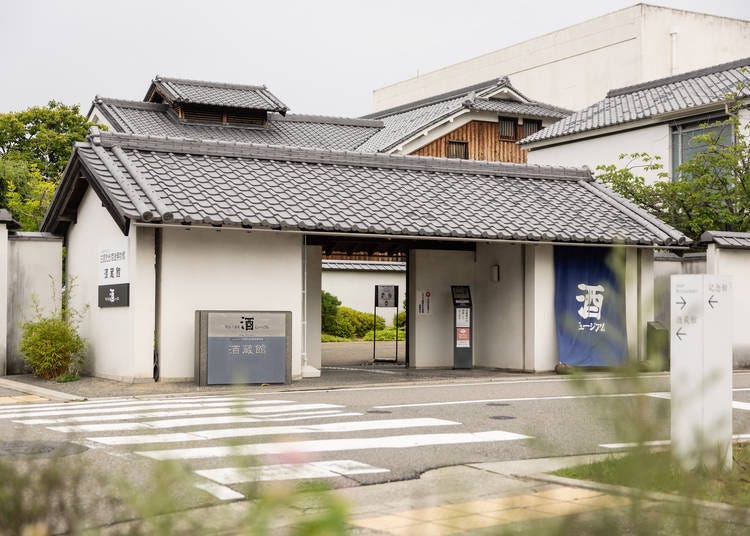
The Hakushika Memorial Sake Brewery Museum, established in 1982, includes the Sakagura-kan, an interactive exhibit hall housed in the former main brewery of Tatsuuma-Honke, built in 1869.
Inside are displays of equipment and tools, arranged in order of the traditional brewing process. Visitors can use their own phones to listen to audio guides in Japanese, English, or Chinese. Display panels are also written in English and Chinese.
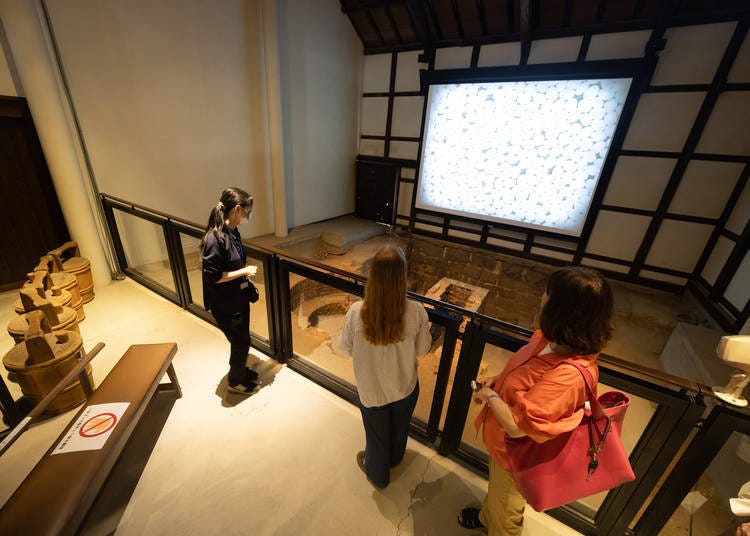
The remains of the old kamaba (rice steaming area) are well preserved, showing how rice was steamed back in the day. Large cauldrons of water were heated with firewood, with the steam directed into a koshiki steamer to cook the rice.
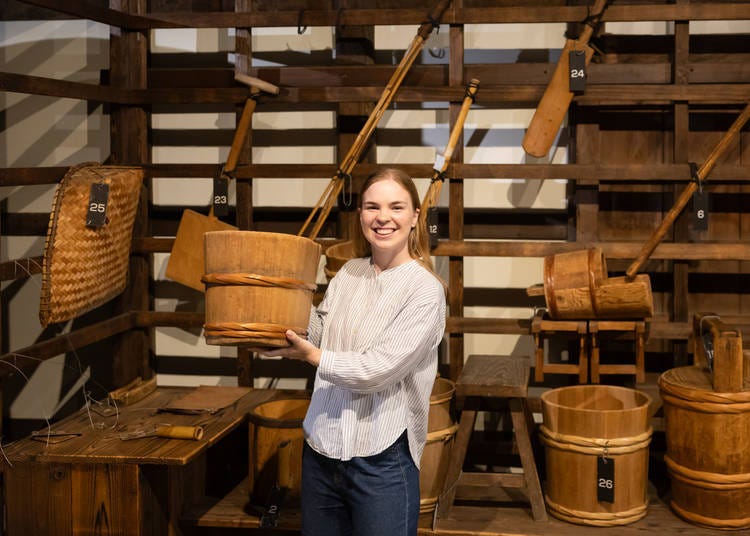
Visitors can handle traditional sake-making tools, watch videos of the brewing process, and even listen to sake-making songs!
“This is called a ‘kitsune oke,’ a 'fox bucket'! These items were often given easy-to-picture names to make them easier to remember,” Johanna notes.
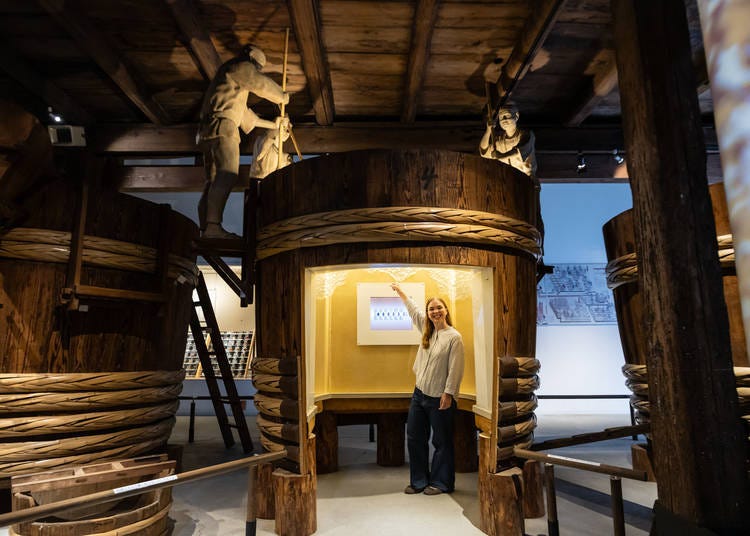
There’s also a great photo spot. Step inside the two-meter-tall sake barrel, and you just might feel like part of the brew yourself!
-
Hakushika Memorial Sake Brewery Museum酒ミュージアム(白鹿記念酒造博物館)
- Address 8-21 Kurakake-cho, Nishinomiya, Hyogo
- Phone Number 0798-33-0008
Hours:
10 AM – 5 PM (Last entry: 4:30 PM)
Closed Tuesdays
Admission:
Adults: 300 yen
Elementary & Junior High: 200 yen
Admission fees may vary by season. See official website for details.
The Perfect Plan for You: Recommendations by Travel Needs
We’ve introduced three plans in this article. If you’re starting your trip in Kobe and are new to sake, the Classic Tour of Famous Breweries is a great way to learn about sake while sampling and choosing your favorites.
If you’re a sake enthusiast looking for the perfect food pairings, try the Sake × Gourmet Experience: Exquisite Brewery Restaurant Pairings tour, where you can enjoy dishes specially crafted to complement the brewery’s own sake.
For something more off the beaten path, head to Nishinomiya-go, located about halfway between Kobe and Osaka. The 400-Year Journey into the Heart of Sake Culture tour lets you experience not only sake brewing but also a glimpse into the traditional lifestyle of brewery families.
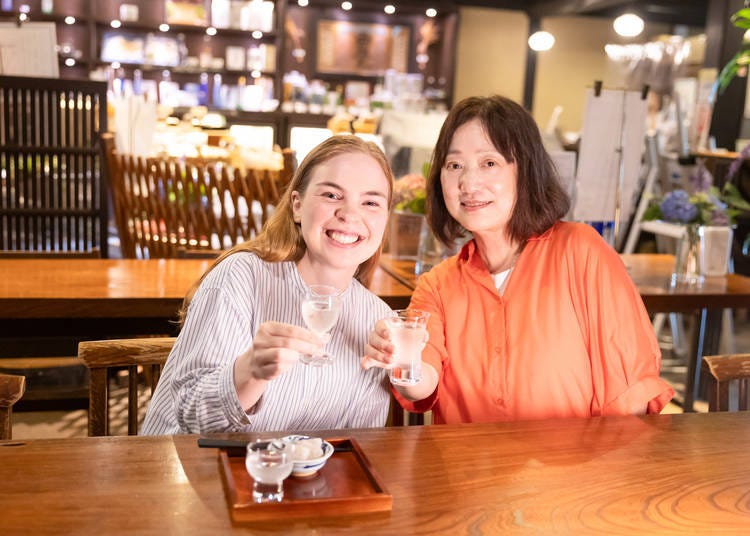
After the visit, Johanna said:
“I used to think of sake as an expensive drink, but at the breweries, you can sample it in small amounts, for free or at a reasonable price, making it much more approachable. I loved being able to pick my favorite brand right there as a souvenir.”
She added, “I also enjoyed learning about the history of sake and the brewing process. I could see the hard work and skill that go into it, and I learned how sake brewing in this region differs from other parts of Japan. Even for those who already love sake and know its history, I highly recommend visiting breweries, where you can handle the tools and hear first-hand accounts of past methods for yourself. For me, this experience really changed the way I enjoy sake and gave me a deeper appreciation for it.”
Nada sake offers such a wide variety of flavors, it’s impossible to lump them all together. Each brewery has its own style, developed through their own original methods, so we highly recommend visiting in person to taste the differences for yourself. The facilities at each brewery also vary, so every visit to a new spot is sure to bring plenty of new discoveries.
Make the Most of Your Nada-Gogo Trip: Recommended Passes & Tours
No More Guesswork! Picking the Perfect Sightseeing Pass
For exploring Nada-Gogo, one of Japan’s top sake-producing areas, the Hanshin Railway is by far the most convenient option, with many breweries located close to the stations. It’s also a safe and easy way to get around after enjoying a few drinks.
Below are some of the best passes to consider for your personal travel needs!
For Nada-Gogo Only: Hanshin Tourist Pass
If your main goal is brewery-hopping in Nada-Gogo, this pass is the perfect choice. Available exclusively to international visitors, it offers unlimited rides on the Hanshin Railway for one day at a reasonable price, making it the best option for its value.
For Nada Gogo + Kyoto and Osaka: Hankyu Hanshin 1-Day Pass
If you want to explore Kyoto (Kawaramachi, Arashiyama) or Osaka (Umeda) right after Nada-Gogo, this pass is perfect. You’ll get unlimited rides on both the Hanshin and Hankyu lines for one day, letting you enjoy Kobe and Kyoto, two of Japan’s most popular cities, in a single trip!
Spending A Few Days in Kansai? Try the Kansai Railway Pass
Perfect for a 2–3 day trip covering Osaka, Kobe, Kyoto, Nara, and Wakayama, this pass is for non-JR lines and includes perks like discounts at nearly 200 sightseeing spots all across the Kansai region.
For Long-Distance Travel by Shinkansen: JR West Kansai WIDE Area Pass
This special pass is for travelers with non-Japanese passports. Its biggest perk is getting to use the Shinkansen along with limited express trains to travel far beyond Kansa to areas like Okayama, Kurashiki, Kinosaki Onsen, and Tottori. If you’re planning to do some long-distance traveling, this is the top choice!
Explore Sake Breweries with Ease: Take a Guided Tour!
Book a trip, and experience Japan’s sake brewing for yourself!
Kiko Matsuda, Keiko Kimura, Risa Tsushi, and a team of female writers familiar with Kansai. We love eating, drinking and traveling! We share fun information based on our experiences.
- Area
- Category
*Prices and options mentioned are subject to change.
*Unless stated otherwise, all prices include tax.
Popular Tours & Activitiess
Recommended places for you
-

Tenryu-ji Temple
Temples
Arashiyama, Uzumasa
-

ISHIDAYA Hanare
Yakiniku
Kobe, Sannomiya, Kitano
-

Kanzenkoshitsuyakinikutabehodai Gyugyu Paradise Sannomiya
Yakiniku
Kobe, Sannomiya, Kitano
-

Kambei Sannomiyahonten
Yakiniku
Kobe, Sannomiya, Kitano
-
Goods
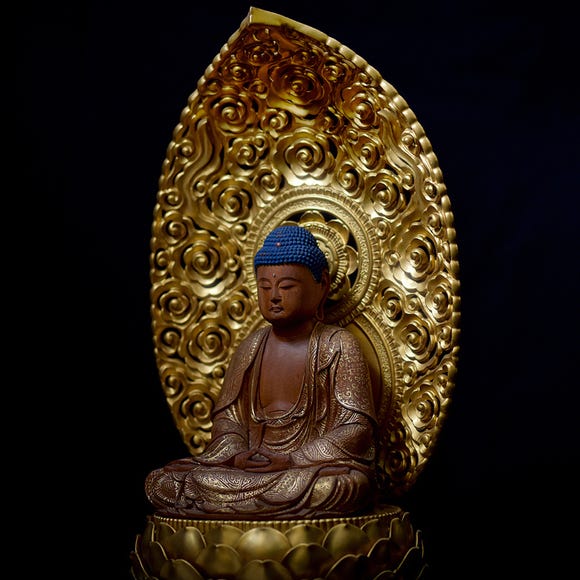
Yoshida Gennojo-Roho Kyoto Buddhist Altars
Gift Shops
Nijo Castle, Kyoto Imperial Palace
-

Jukuseiniku-to Namamottsuarera Nikubaru Italian Nikutaria Sannomiya
Izakaya
Kobe, Sannomiya, Kitano
-
Ad

Recharge and Relax with a Healing Getaway at Kamenoi Hotel Toba
-
Ad
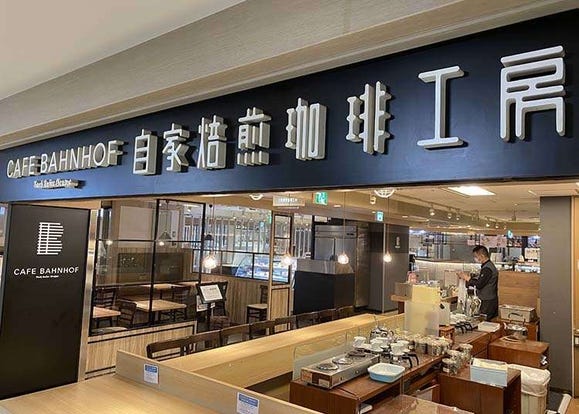
Café Bahnhof in Osaka: The home-roasted coffee that captivated G20 leaders!
-

New Way to Reach Koyasan! Ride Nankai's 'GRAN Tenku' for a Heavenly Journey
by: Guest Contributor
-

Kyoto's Hidden Treasures Open This Winter! Enjoy Exclusive Access to 15 Rare Cultural Sites (Jan-Mar 2026)
by: Guest Contributor
-

Celebrate a Dreamy Barbapapa Christmas at JR Osaka Station's Twilight
by: Guest Contributor
-
Ad

Discover Timeless Beauty: Kimono-en, a Web Magazine Exploring the Spirit of Kimono
Inspiration for Accommodations
-

Spacious Family Hotel in Namba: 20 Comfortable Stays for Family Fun
-
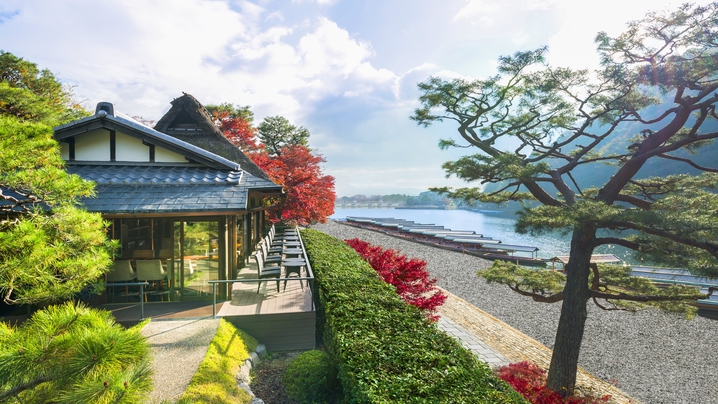
Charming Hotels to Enjoy the Spectacular Views of Arashiyama's Autumn Leaves from Your Room
-

Experience Stunning Views of Osaka Castle from Private Spaces: Top Hotels Near Osaka Castle
-
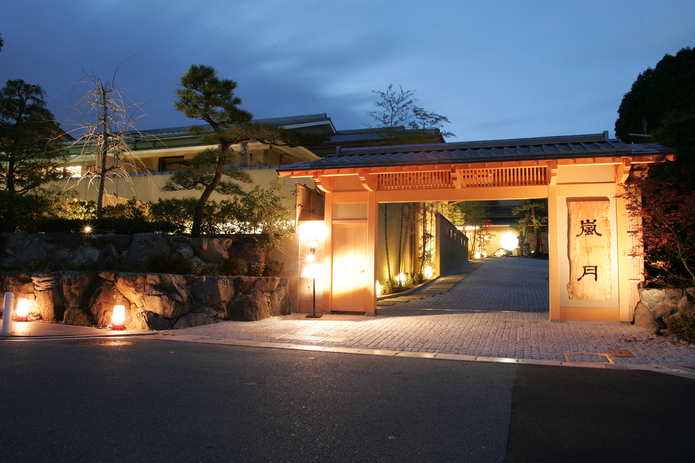
Recommended by Visitors! Arashiyama's Best-Rated Hotels
-

Family-Friendly Universal Studios Japan Hotel with Excellent Access
-
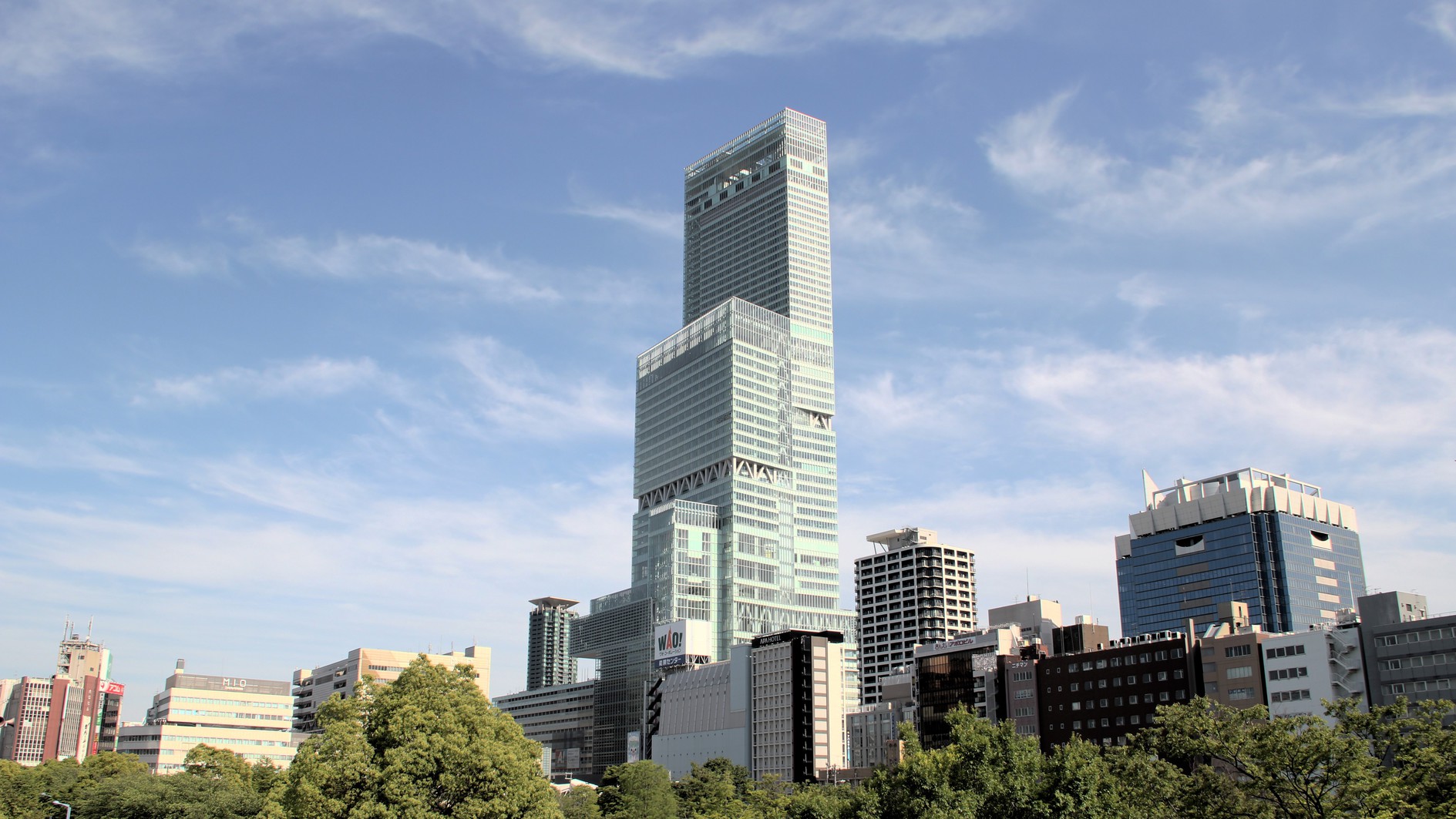
Enjoy a Comfortable Stay in Osaka! 10 Hotels with Convenient Airport Shuttle Services
-

Top 10 Recommended Hotels Near Namba Station with Great Access
-
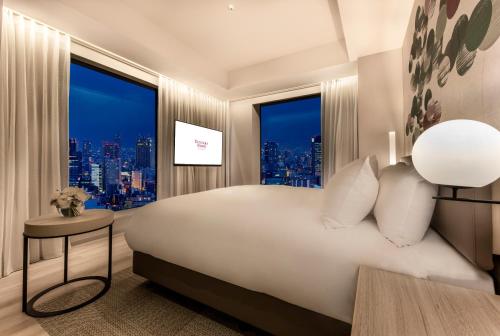
Enjoy Night Views from Your Room! Recommended Hotels in Namba Area
-

History and Sustainable Brewing: World-Renowned Fukuju Sake at Kobe Shushinkan
by: WESTPLAN
-

8 Unfamiliar (But Totally Normal) Customs in Japan!
-

Inside Kyoto's Spectacular Sanjusangen-do Temple with 1,000 Gold Statues
-

Hoshinoya Kyoto: This Incredible Japanese Hotel Welcomes You By Boat on a Sakura-Filled River
-
Ad

Discover Timeless Beauty: Kimono-en, a Web Magazine Exploring the Spirit of Kimono
-

Geisha in Kyoto Struggle to Protect Traditions in Face of Coronavirus
by: Cassandra Lord
- #best gourmet Osaka
- #things to do Osaka
- #what to do in kyoto
- #what to bring to japan
- #best gourmet Kyoto
- #new years in Osaka
- #what to buy in nanba
- #Visiting Osaka
- #onsen tattoo friendly arima
- #daiso
- #Visiting Kyoto
- #best japanese soft drinks
- #japanese fashion culture
- #japanese convenience store snacks
- #japanese nail trends


















